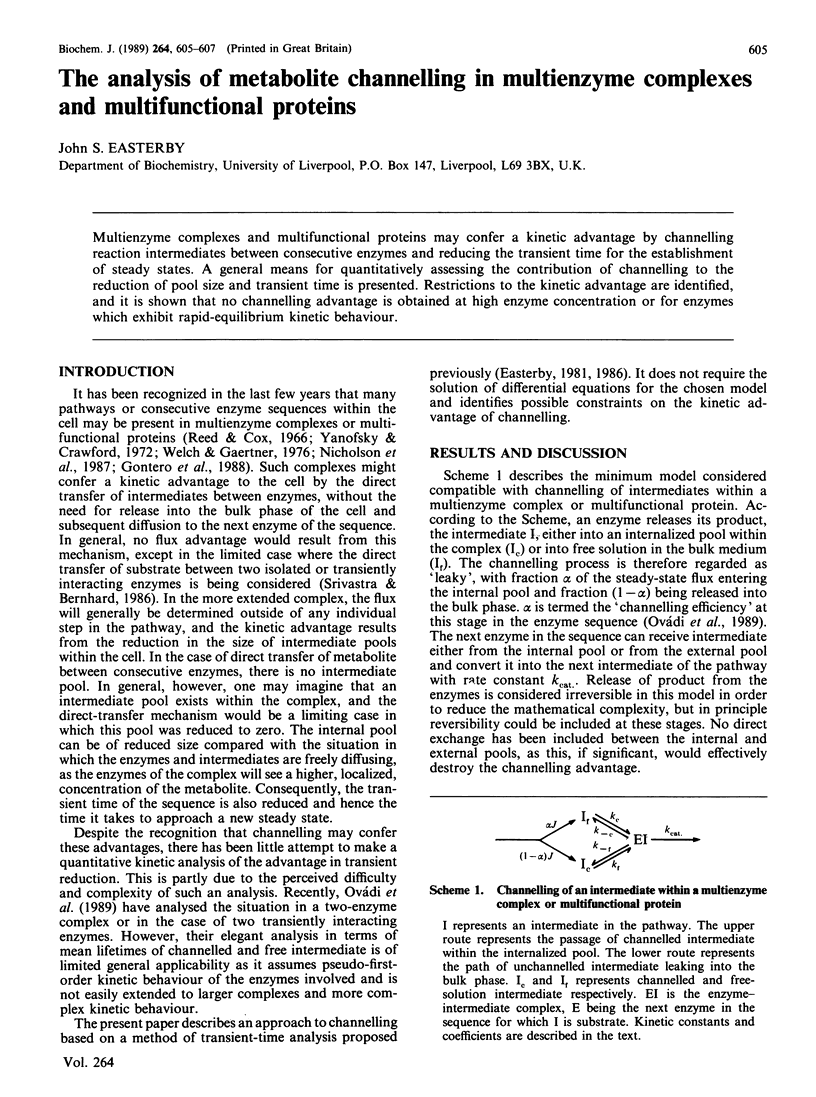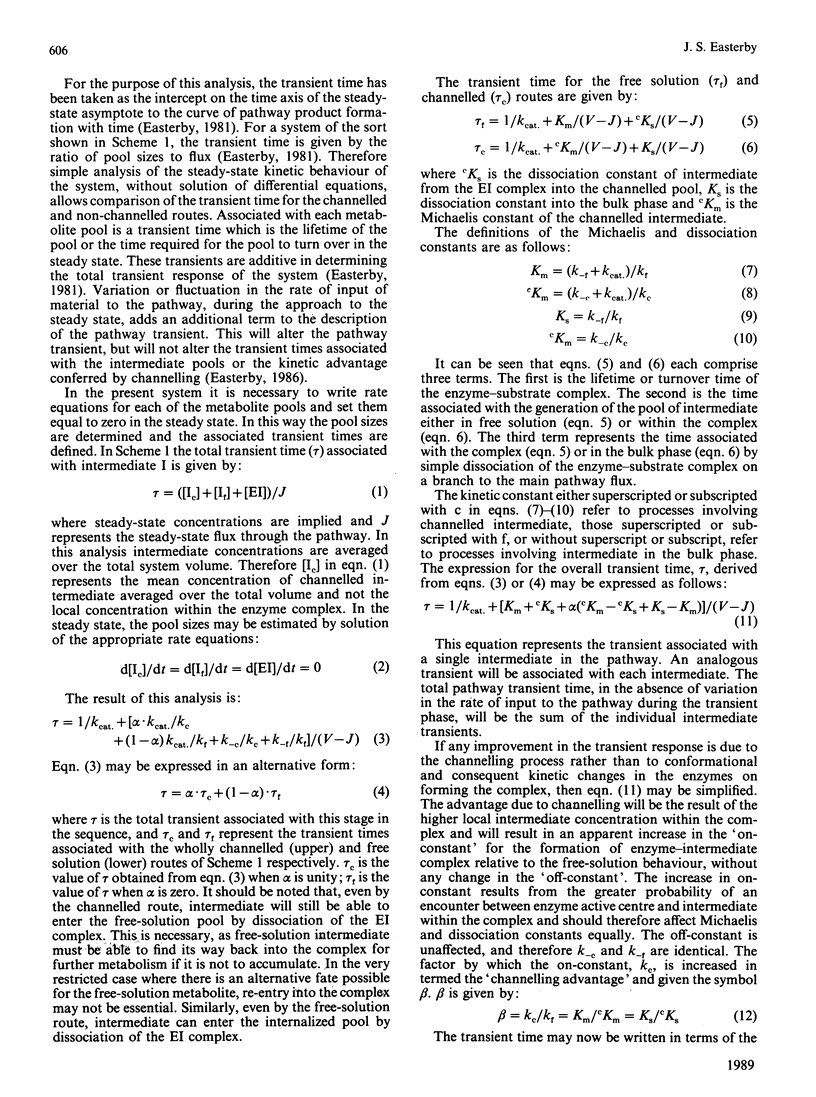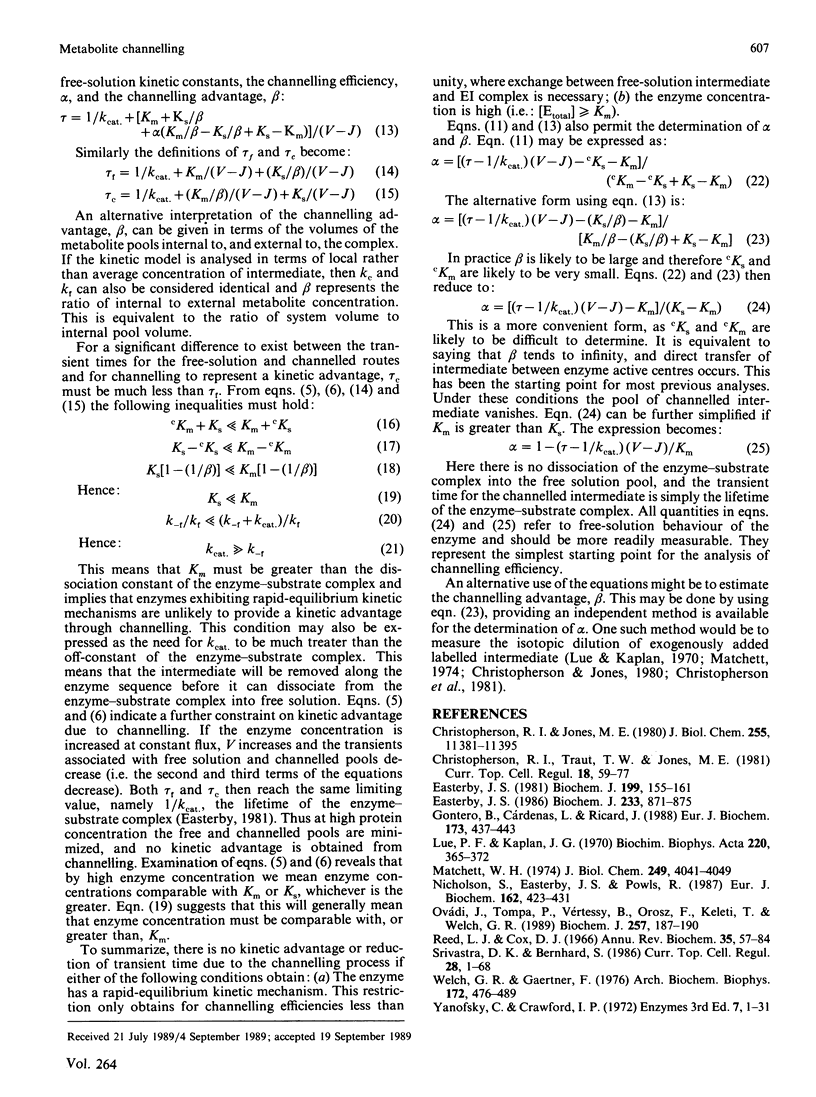Abstract
Multienzyme complexes and multifunctional proteins may confer a kinetic advantage by channelling reaction intermediates between consecutive enzymes and reducing the transient time for the establishment of steady states. A general means for quantitatively assessing the contribution of channelling to the reduction of pool size and transient time is presented. Restrictions to the kinetic advantage are identified, and it is shown that no channelling advantage is obtained at high enzyme concentration or for enzymes which exhibit rapid-equilibrium kinetic behaviour.
Full text
PDF


Selected References
These references are in PubMed. This may not be the complete list of references from this article.
- Christopherson R. I., Jones M. E. The overall synthesis of L-5,6-dihydroorotate by multienzymatic protein pyr1-3 from hamster cells. Kinetic studies, substrate channeling, and the effects of inhibitors. J Biol Chem. 1980 Dec 10;255(23):11381–11395. [PubMed] [Google Scholar]
- Christopherson R. I., Traut T. W., Jones M. E. Multienzymatic proteins in mammalian pyrimidine biosynthesis: channeling of intermediates to avoid futile cycles. Curr Top Cell Regul. 1981;18:59–77. doi: 10.1016/b978-0-12-152818-8.50010-4. [DOI] [PubMed] [Google Scholar]
- Easterby J. S. A generalized theory of the transition time for sequential enzyme reactions. Biochem J. 1981 Oct 1;199(1):155–161. doi: 10.1042/bj1990155. [DOI] [PMC free article] [PubMed] [Google Scholar]
- Easterby J. S. The effect of feedback on pathway transient response. Biochem J. 1986 Feb 1;233(3):871–875. doi: 10.1042/bj2330871. [DOI] [PMC free article] [PubMed] [Google Scholar]
- Gontero B., Cárdenas M. L., Ricard J. A functional five-enzyme complex of chloroplasts involved in the Calvin cycle. Eur J Biochem. 1988 Apr 15;173(2):437–443. doi: 10.1111/j.1432-1033.1988.tb14018.x. [DOI] [PubMed] [Google Scholar]
- Lue P. F., Kaplan J. G. Metabolic compartmentation at the molecular level: the function of a multienzyme aggregate in the pyrimidine pathway of yeast. Biochim Biophys Acta. 1970 Dec 16;220(3):365–372. doi: 10.1016/0005-2744(70)90268-8. [DOI] [PubMed] [Google Scholar]
- Matchett W. H. Indole channeling by tryptophan synthase of neurospora. J Biol Chem. 1974 Jul 10;249(13):4041–4049. [PubMed] [Google Scholar]
- Nicholson S., Easterby J. S., Powls R. Properties of a multimeric protein complex from chloroplasts possessing potential activities of NADPH-dependent glyceraldehyde-3-phosphate dehydrogenase and phosphoribulokinase. Eur J Biochem. 1987 Jan 15;162(2):423–431. doi: 10.1111/j.1432-1033.1987.tb10619.x. [DOI] [PubMed] [Google Scholar]
- Ovádi J., Tompa P., Vértessy B., Orosz F., Keleti T., Welch G. R. Transient-time analysis of substrate-channelling in interacting enzyme systems. Biochem J. 1989 Jan 1;257(1):187–190. doi: 10.1042/bj2570187. [DOI] [PMC free article] [PubMed] [Google Scholar]
- Srivastava D. K., Bernhard S. A. Enzyme-enzyme interactions and the regulation of metabolic reaction pathways. Curr Top Cell Regul. 1986;28:1–68. doi: 10.1016/b978-0-12-152828-7.50003-2. [DOI] [PubMed] [Google Scholar]
- Welch G. R., Gaertner F. H. Coordinate activation of a multienzyme complex by the first substrate. Evidence for a novel regulatory mechanism in the polyaromatic pathway of Neurospora crassa. Arch Biochem Biophys. 1976 Feb;172(2):476–489. doi: 10.1016/0003-9861(76)90101-6. [DOI] [PubMed] [Google Scholar]


